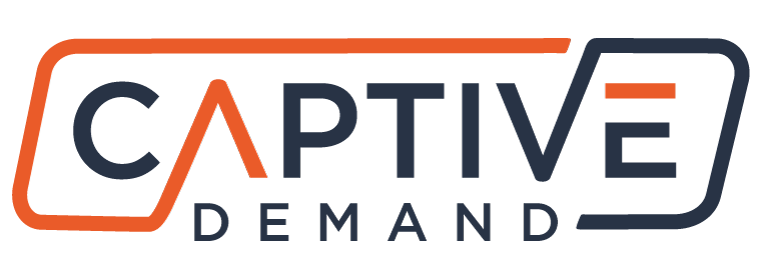Conversion rate optimization (CRO) marketing is the process in digital marketing of increasing the percentage of visitors to your website who take a desired action. This action could be anything from making a purchase to signing up for a newsletter to downloading a white paper. CRO services are vital because they can help turn a website that may be struggling to generate leads into a well-oiled machine that consistently produces new business opportunities. As you can imagine, we’ve turned many of our marketing efforts to CRO due to its enormous success.
What is the Difference Between SEO and CRO?
Search engine optimization (SEO) optimizes your website to rank higher in search engine results pages (SERPs) to drive more organic traffic to your site. On the other hand, conversion optimization focuses on increasing the percentage of visitors who take a desired action once they reach your site. While SEO and CRO marketing both have the ultimate goal of driving more website visitors, they do it differently. CRO agencies use SEO strategies, enabling your business to convert traffic from search engines to valuable new paying customers.
Why is a CRO Marketing Strategy so Important?
CRO works as an algorithm for improving the conversion rate in websites and mobile apps. It’s mainly about developing ideas for elements of your site that need improvement and evaluating these assumptions through A/B and Multivariate Testing. CRO is essential because it takes your SEO strategies one step further by not only bringing visitors to your site but also maximizing the number of those visitors that take a desired action. These strategies correlate with new customers and an ever-growing business.
What is the Conversion Rate?
A conversion rate shows the proportion of visitors who have completed a desired action once visiting your site, such as submitting an online application. A higher conversion rate indicates that your site will be more attractive and appealing to a larger audience. Conversely, the conversion rate may decrease for various reasons, including poor website design or performance and website construction and architecture. Slow load speeds and incomplete documents are other typical factors impacting conversion rates. However, we’re acutely aware of these negative factors and work diligently to turn them around and mitigate any lasting effects.
What is the CRO Process?
Now that we know how vital a CRO agency is to the success of your website, let’s take a look at the process. The first step in conversion rate optimization services is establishing business objectives and KPIs. Once these are determined, it’s time to move on to data collection. This is where you’ll want to take a close look at your website’s analytics to see where users are dropping off and identify any areas that need improvement.
Let’s look at the key steps:
Preliminary research
To track and calculate conversion rate, it is necessary to determine what online activity is most important to you. Knowing your key performance indicators (KPIs) will help you with this. First, you must identify which specific actions on your website or app equate to a sale, lead, or whatever goal you are hoping to achieve. KPIs can be anything from “time on site” to “pages visited” to “items in cart.”
Develop hypotheses
Once you have a solid understanding of your data, it’s time to develop hypotheses to guide your A/B and multivariate tests. The testing must highlight which parts or pages of the site are being modified and the lead demographic that you’re looking to target. Note the phrase “testable” because a hypothesis should have sufficient specificity; it should suggest a realistically implemented change or assess its usefulness. The Wider Functional Model indicates that many factors affect the outcome of a conversion, not just those on the page itself. Take this into account when developing hypotheses.
Putting it to the test
As with any scientific procedure, remember to isolate your variables. For example, the idea that two components of one page can be changed to test their conversion rates might make one confused about the other. These tests focus on a particular variable and show two different pages for different visitors, categorized into split or A/B tests. A variety of tests can also be performed, including multivariate tests, usability tests, and heatmaps.
Analyze the results
After the test is complete, it’s time to analyze your results to see if there was a significant difference between the control and variation. Was there an improvement in conversions? If not, you’ll want to go back and revise your hypothesis before putting the new changes to the test. Remember that you must take your KPIs into account to come up with a conclusion, and you should be able to measure the statistical significance in detail to determine effectiveness. Consider the total number of site visitors and average order value when analyzing results.
Conversion Rate Optimization Strategies
While the CRO process is important, it’s only part of the puzzle. You’re likely to see minimal improvement in your conversion rate without an effective strategy. The most common and successful strategies used by conversion rate optimization services focus on the following:
Running tests on your landing pages
Your landing page is often the first interaction a potential customer has with your brand. As such, it’s vital to make sure that it’s as effective as possible. A/B testing is a successful way to do this, as it allows you to test different versions of your landing page to see which version performs better. As a result, it’s an integral part of CRO marketing.
Create workflows for your team
There are many automated workflows that you can implement using marketing automation software. By doing so, you can free up your team’s time so they can focus on more important tasks.
For example, automated email workflows can help improve efficiency by scheduling meetings with just a few clicks. Sales reps can also receive notification of a lead’s intent to view prices on your web page. You can even automatically send out e-commerce email reminders to customers who have abandoned their virtual shopping carts. Abandoned cart emails have shown to be extremely beneficial and have a high opening rate.
Help leads become Marketing Qualified Leads.
Sometimes visitors want to get down to business without the typical buying journey and speak directly to a sales representative. You can use live chat software on your website to accommodate these leads and help them become marketing qualified leads (MQLs).
These leads are essential because they allow you to move potential customers further down the sales funnel and increase the likelihood of conversion. In fact, live chat has been shown to increase conversions by as much as 20%.
Creating text-based CTAs in blog posts
Your CTA is one of the most critical elements on your website, as it’s what tells the user what to do next. As such, it’s essential to make sure that your CTA is clear, concise, and effective.
Text-based CTAs are a great alternative to traditional image-based ones. They can be used in blog posts and other types of web content and can be more effective than image-based CTAs. This is likely because they’re less intrusive and more relevant to the user, as they’re directly related to the text they’re reading.
Adding lead flows to your blog
Lead flows are another element to improve conversions in websites. Lead flows are highly-interactive popups geared towards the customer’s attention, resulting in measurable revenue. You can choose from the dropout box, dropout banner, or popup box, according to your offer. According to HubSpot, these lead flows can increase conversions by up to 400%.
Let Us Help You!
If you’re looking for even more ways to improve your conversion rate, or if you need help implementing a successful CRO strategy, we’d be happy to assist you! Captive Demand is a full-service marketing firm specializing in conversion rate optimization, web development, content creation, demand generation, and SEO. Let us help you improve your marketing efforts and, most importantly, grow your business!


